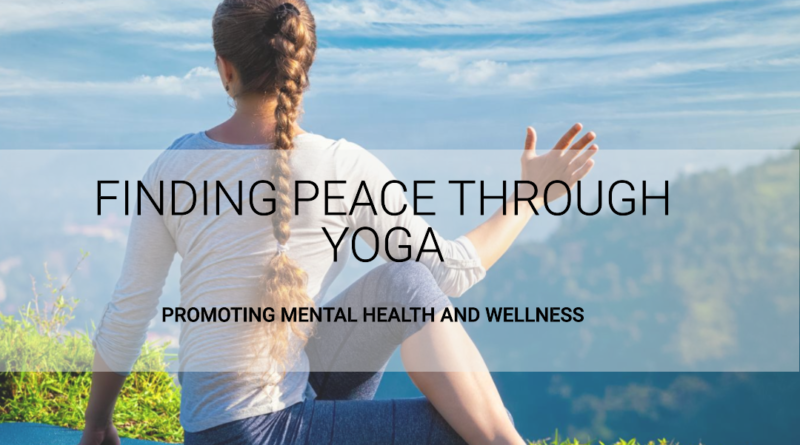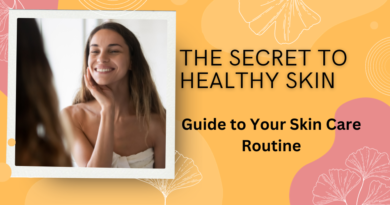Yoga for Mental Health and Prominent Poses of Yoga
In today’s society, grappling with anxiety, depression, and other mental health issues, the value of incorporating yoga into daily routines becomes evident.
The World Health Organization (WHO) reports that depression affects over 264 million people worldwide, with anxiety disorders affecting around 284 million.
Scientific research is unveiling yoga’s concrete mental health benefits. A 2014 meta-analysis in JAMA Internal Medicine highlighted moderate anxiety and depression reductions through yoga interventions in various trials. A 2020 systematic review in the British Journal of Sports Medicine linked yoga for mental health to improved mood, reduced psychological distress, and heightened mindfulness.
At yoga’s core are poses, or “asanas,” tailored to enhance emotional well-being. These poses have evolved over centuries to target specific mental and emotional aspects.
- Boat Pose (Navasana)
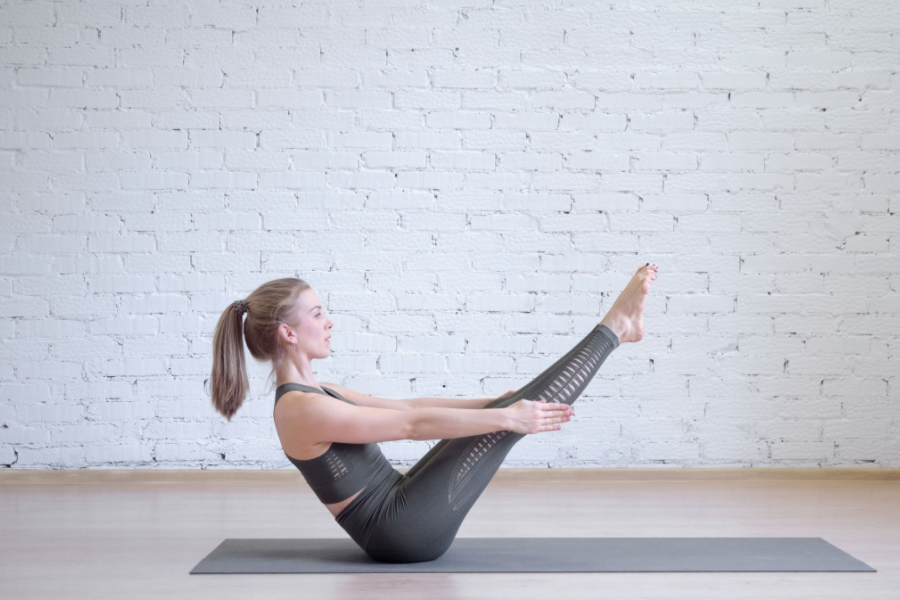
Boat Pose, also known as Navasana, is a foundational yoga posture that engages the core muscles and cultivates balance.
- To perform Boat Pose, start by sitting on the floor with your knees bent and feet flat. Lean back slightly and lift your feet off the ground, finding your balance on your sitting bones.
- As you gain stability, gradually straighten your legs to form a V shape with your torso and thighs. Your arms can be extended forward in line with your shoulders.
- Hold this position for a few breaths, aiming to keep your spine long and your core engaged. Beginners can bend their knees if needed.
- Complete 3 to 5 cycles of holding and releasing the pose, gradually increasing the duration as your strength improves.
Benefits of Boat Pose
- Core Strength
- Hip Flexors
- Digestive Stimulation
- Balance and Stability
- Improved Posture
- Confidence and Willpower
Incorporating Boat Pose into your yoga routine can contribute to a strong core, improved balance, and a heightened sense of physical and mental empowerment.
- Bound Angle Pose (Baddha Konasana)
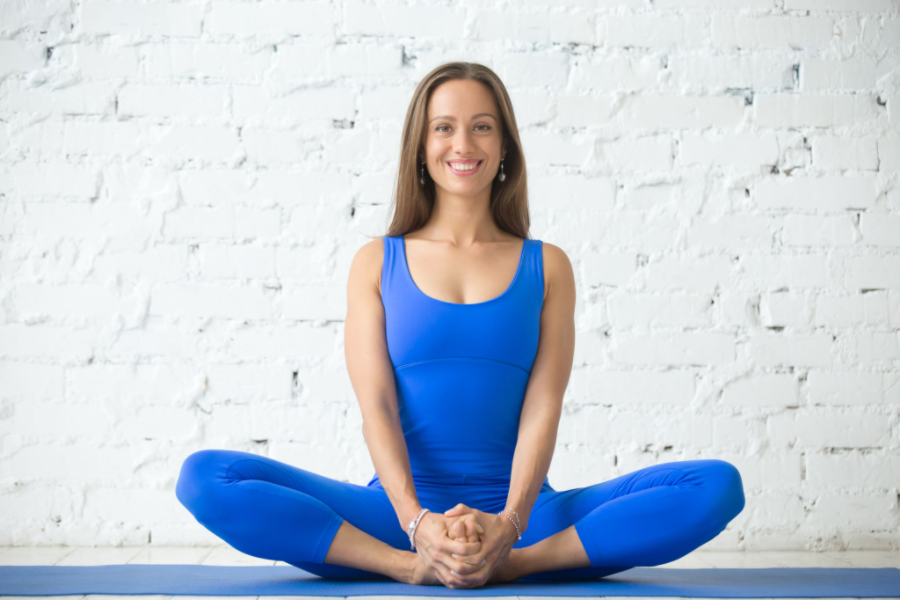
Bound Angle Pose, also known as Baddha Konasana or Butterfly Pose, is a seated yoga asana that targets the hips and groin.
- To perform Bound Angle Pose, sit on the floor and bring the soles of your feet together in front of you, allowing your knees to fall to the sides.
- Hold your feet or ankles with your hands. Gently press your knees towards the floor, finding a comfortable stretch in your inner thighs and hips. Sit up tall, lengthening your spine, and engage your core. Breathe deeply and relax into the pose.
- Hold the pose for 5-10 breaths or longer, gradually increasing the duration as your flexibility improves.
Benefits of Bound Angle Pose:
- Hip Opening
- Groin Stretch
- A sense of relaxation and calmness
- Stimulates Abdominal Organs
- Preparation for Childbirth
- Energy Flow
- Improved Circulation
Incorporating Bound Angle Pose into your yoga routine can lead to increased hip flexibility, relaxation, and improved overall well-being.
- Bow Pose (Dhanurasana):
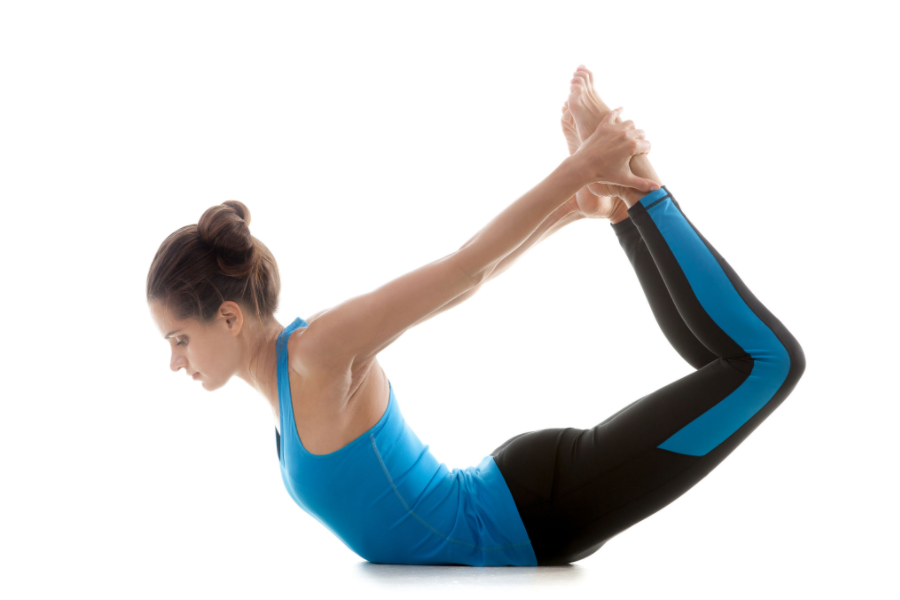
Bow Pose, also called Dhanurasana, is a backbending yoga asana resembling an archer’s bow.
- To perform Bow Pose, lie face down on your mat. Bend your knees and reach back to grasp your ankles or feet.
- Inhale and lift your chest off the ground while simultaneously kicking your feet into your hands, creating a bow-like shape with your body.
- Keep your gaze forward and hold the pose for several breaths, aiming to lift higher while maintaining balance. Release the pose by gently lowering your chest and feet back to the ground.
- Practice 3-5 cycles, gradually extending the duration as your back flexibility improves.
Benefits of Bow Pose
- Spine Flexibility
- Strengthened Back Muscles
- Improved Posture
- Chest Opening
- Stimulated Abdominal Organs
- Energy Flow
- Enhanced Circulation
Incorporating Bow Pose into your yoga routine can lead to a more flexible spine, improved posture, and a revitalized sense of energy.
- Camel Pose (Ustrasana):
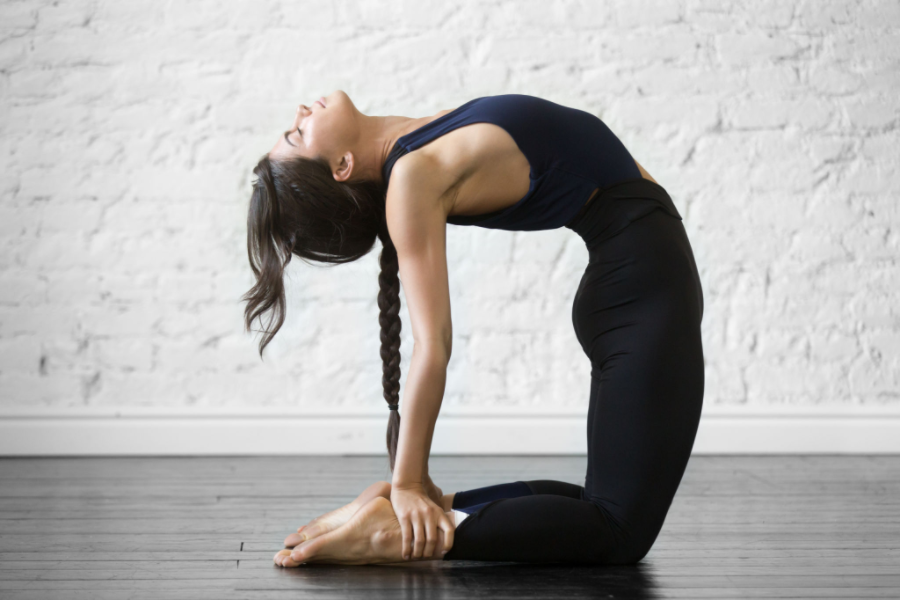
Camel Pose, known as Ustrasana, is a dynamic backbending yoga asana that opens the chest and stretches the front of the body.
- To perform Camel Pose, start by kneeling on the mat. Press your shins and the tops of your feet into the ground. Place your hands on your lower back, fingers pointing down. Inhale, lift your chest, and arch your back gently.
- As you exhale, lean back and reach for your heels one at a time, extending your arms behind you. Keep your hips aligned over your knees and your thighs perpendicular to the floor. Drop your head back if comfortable, but avoid straining the neck.
- Hold the pose for a few breaths, gradually increasing the duration as your flexibility improves. To release, bring your hands back to your lower back and slowly come up, lifting the chest first.
Benefits of Camel Pose
- Spine Flexibility
- Chest Opening
- Stretched Hip Flexors
- Relief for Rounded Shoulders
- Energizing
- Stimulated Digestion
- Emotional Release
Incorporating Camel Pose into your yoga practice can lead to a more flexible spine, improved posture, and increased energy levels. Remember to approach the pose gradually and listen to your body’s limits.
- Easy Pose (Sukhasana)
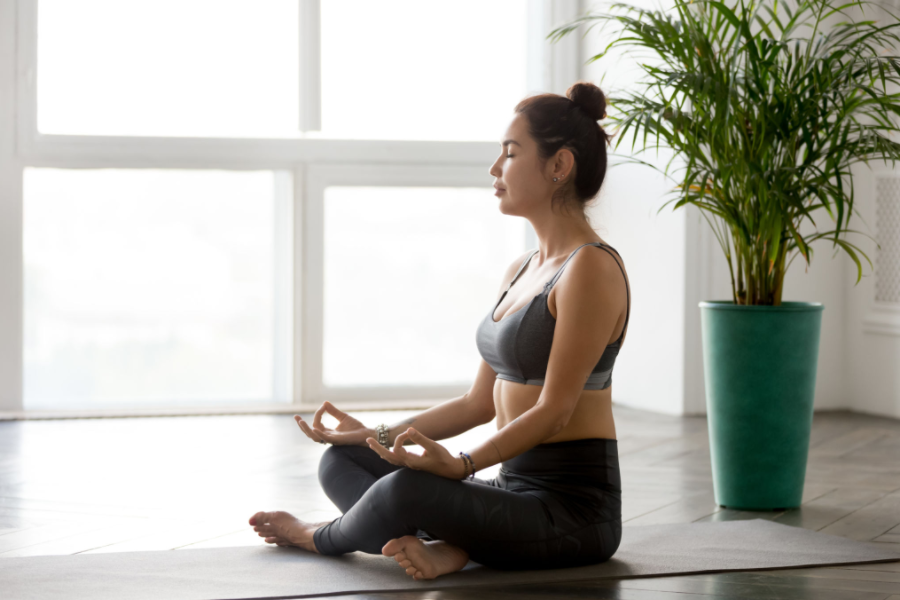
Easy Pose, also called Sukhasana, is a foundational seated yoga posture for mental health, meditation and relaxation.
- To perform Easy Pose, sit on the floor with your legs crossed. Place your hands on your knees or in your lap. Keep your spine straight and your shoulders relaxed. Close your eyes if comfortable, and focus on your breath.
- Hold the pose for several minutes, maintaining a steady, even breath.
Benefits of Easy Pose
- Grounding
- Hip Flexibility
- Spine Alignment
- Calm Mind
- Stress Relief
- Digestive Ease
- Mindfulness
Incorporating Easy Pose into your daily routine can enhance your meditation practice, promote relaxation, and cultivate a sense of inner stillness.
- Bhramari Pranayama (Controlled Breathing Exercise – Bee Breathing)
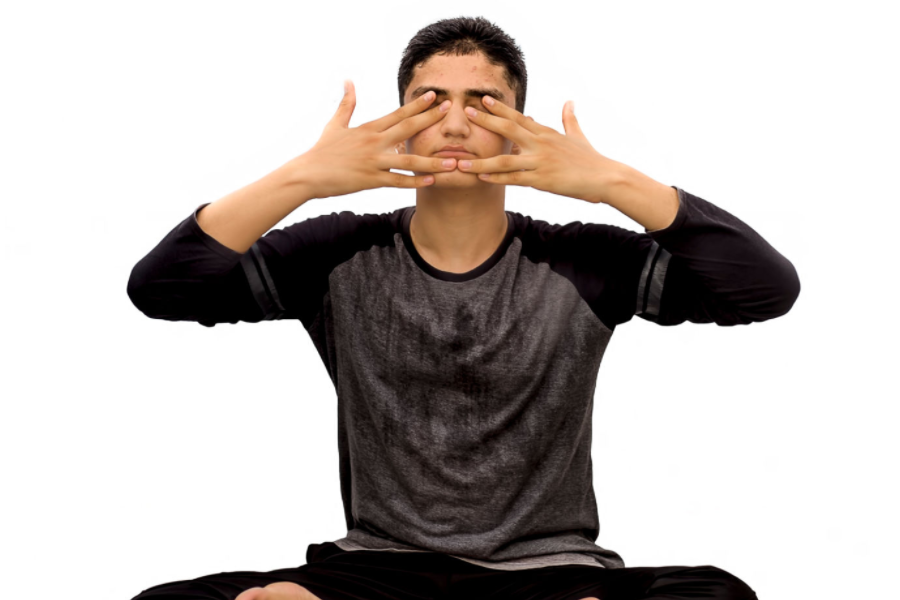
Bhramari Pranayama, or Bee Breath, is a calming breathing exercise in yoga.
- Sit comfortably with your spine straight and close your eyes. Place your index fingers on your ears’ cartilage, your thumbs on your forehead, and your remaining fingers over your eyes.
- Inhale deeply through your nose, and as you exhale, make a humming sound like a bee. Keep your mouth closed. Feel the vibration and resonance of the sound in your head.
- Repeat for 5-10 rounds or more, focusing on the soothing sensation.
Benefits of Bhramari Pranayama
- Stress Reduction
- Anxiety Relief
- Mood Enhancement
- Throat Relaxation
- Improved Concentration
- Blood Pressure Regulation
- Mindfulness and Internal Awareness
Integrating Bhramari Pranayama into your routine can provide immediate relaxation and contribute to a more peaceful state of mind.
- Balasana (Child’s Pose)

Balasana, or Child’s Pose, is a resting yoga posture often used for relaxation and introspection.
- Start on your hands and knees, then lower your hips back towards your heels. Extend your arms forward and let your forehead rest on the mat. Breathe deeply and relax into the pose, feeling the stretch in your back.
- Hold the pose for several breaths or longer, finding comfort in the gentle stretch.
Benefits of Balasana
- Stress Relief
- Back Stretch
- Hip Opening
- Digestive Aid
- Relaxation
- Mindful Pause
- Regulation of Nervous System
Incorporating Balasana into your practice can offer moments of rest, relaxation, and an opportunity for inner connection.
- Viparita Karani (Restorative Pose) or (Legs-Up-the-Wall Pose)

Viparita Karani, also known as Legs-Up-the-Wall Pose, is a restorative yoga posture.
- Lie on your back with your hips close to a wall. Lift your legs and rest them vertically against the wall. Extend your arms to the sides or rest them on your belly. Relax your body, close your eyes, and focus on your breath.
- Hold the pose for 5-15 minutes or as comfortable.
Benefits of Viparita Karani
- Stress Reduction
- Improved Circulation
- Soothing for Legs
- Mild Inversion
- Calm Mind
- Lymphatic Flow
- Restful Sleep
Incorporating Viparita Karani into your routine can bring soothing rejuvenation and contribute to a more balanced body and mind.
- Uttanasana (Standing Forward Bend Pose)

Uttanasana, or Standing Forward Bend, is a forward folding yoga posture.
- Stand tall, exhale, and fold forward from your hips, keeping your spine long. Let your head hang and relax your neck. You can bend your knees slightly if needed. Place your hands on the ground or hold your calves, ankles, or elbows.
- Breathe deeply and feel the stretch in your hamstrings and back.
- Hold for several breaths or longer, gradually deepening the stretch.
Benefits of Uttanasana
- Hamstring Stretch
- Relaxation
- Spine Flexibility
- Blood Flow
- Digestive Aid
- Release of Tension
- Mind-Body Connection
Incorporating Uttanasana into your practice can provide physical relief, relaxation, and a mindful connection to your body.
- Shavasana (Corpse Pose)

Shavasana, or Corpse Pose, is a deeply relaxing yoga posture often used for final relaxation.
- Lie flat on your back, arms and legs relaxed, palms facing upward. Close your eyes and allow your body to release tension. Focus on your breath and let go of any thoughts or worries.
- Stay in this stillness for 5-15 minutes or longer.
Benefits of Shavasana
- Relaxation
- Rejuvenation
- Mindfulness
- Integration
- Body Awareness
- Reduced Fatigue
- Calm Mind
Incorporating Shavasana into your yoga practice allows for integration and deep relaxation, enhancing the overall benefits of your session.
In the vibrant tapestry of yoga, where ancient wisdom intertwines with modern science, we discover a profound sanctuary for our mental well-being. From the gentle repose of Child’s Pose to the invigorating stretch of Bow Pose, and from the serene stillness of Shavasana to the energizing hum of Bhramari Pranayama, each pose and practice offers a unique gateway to tranquility, vitality, and self-discovery. As we journey through these asanas and controlled breathing exercises, we traverse the terrain of inner harmony, resilience, and mindfulness, finding solace in the embrace of each posture. With every breath, stretch, and moment of presence, yoga becomes a testament to the intricate dance between the body, mind, and spirit – a timeless ritual for cultivating our mental health and nurturing the essence of our being.

